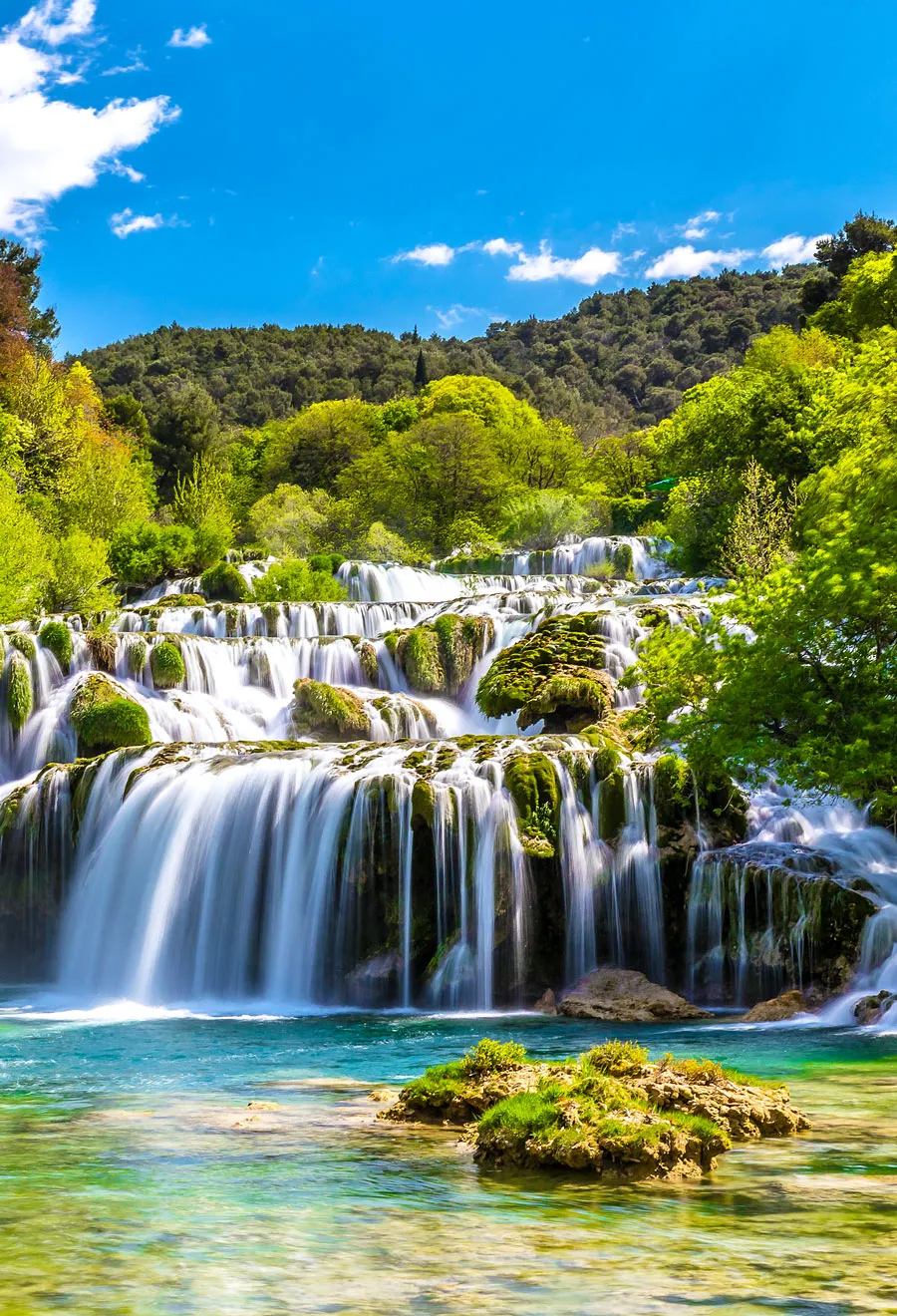Waterfalls have a way of fascinating us like few other natural wonders do. Watching thousands upon thousands of gallons of rushing water cascade over the edges of cliffs and mountain sides — sometimes hundreds of feet high — is nothing short of mesmerizing, so it’s no wonder many of us seek out waterfalls on our travels. From the world’s tallest uninterrupted waterfall in the depths of the Venezuelan jungle to the spectacular waterfall whose name means “the smoke that thunders,” here are 15 of the most awe-inspiring waterfalls you can visit.
Iguazu Falls – Argentina/Brazil
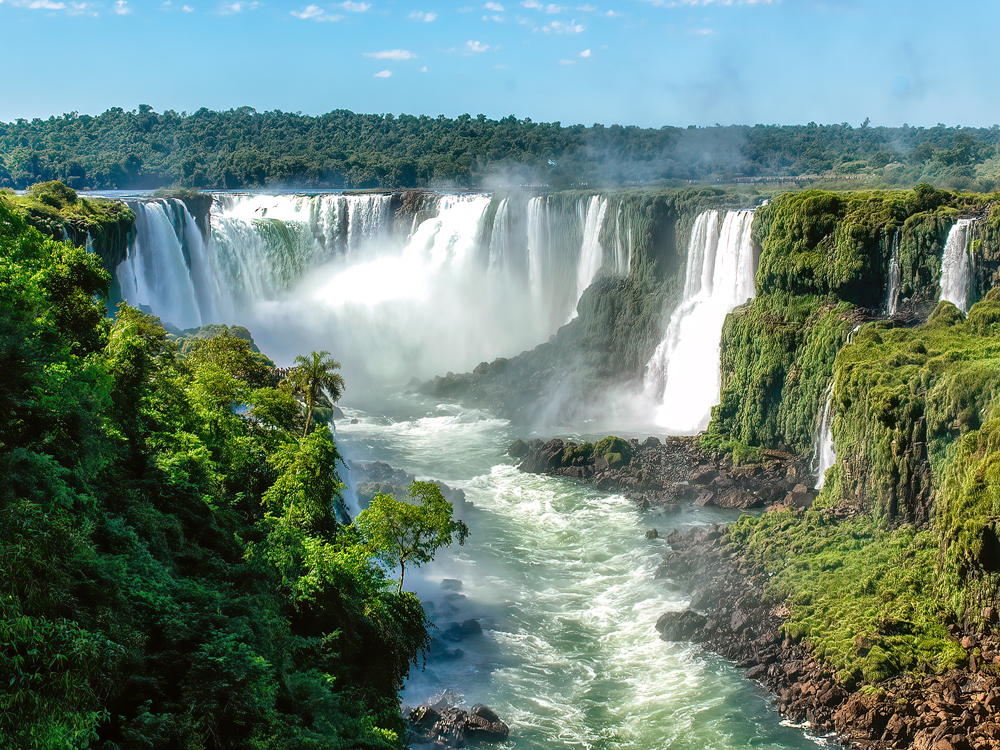
The name Iguazu is derived from a Guaraní word meaning “great water,” but even that may be an understatement. Wider than Africa’s Victoria Falls at 1.7 miles across and 100 feet taller than Niagara Falls at its highest point, Iguazu Falls is considered the world’s largest waterfall system. Made up of more than 275 separate cascades along the Iguazu River, the falls straddle the border between Argentina and Brazil, and both countries have rightfully created national parks around this true natural wonder.
In the midst of the glorious waterfall complex, the memorably named Devil’s Throat stretches over 300 feet wide. Catwalks extend over the Iguazu River, allowing visitors to walk across and peer just over the edge of a precipitous drop more than 260 feet below. The horseshoe-shaped curtain of water is so powerful that it completely obscures the pool below with a thick mist. You can also experience that mist firsthand, as a popular way to visit the falls is to join one of the many boat tours that skirt just below Iguazu’s many impressive cascades.
Niagara Falls – U.S./Canada
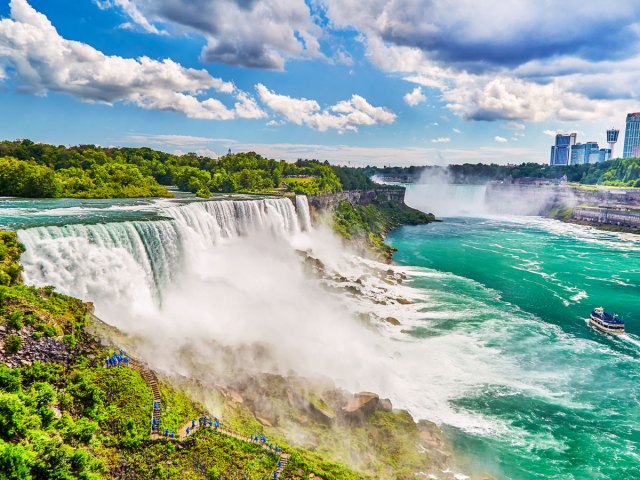
Niagara Falls is one of the most famous natural wonders in North America. Located on the border between the Canadian province of Ontario and the state of New York, the massive waterfall system attracts 12 to 14 million visitors every year. More than 6 million cubic feet of water go over the crest line of Niagara Falls every minute. To put that in perspective, there are 88,263 cubic feet of water in an Olympic swimming pool, which means about 68 Olympic swimming pools go crashing to the ground every minute at Niagara Falls.
What many visitors don’t realize is that Niagara Falls actually consists of three separate waterfalls: Horseshoe Falls (the largest, also sometimes called the Canadian Falls), the American Falls, and Bridal Veil Falls (the smallest, named for its resemblance to a bridal veil). Niagara Falls State Park also claims the title of the oldest state park in the U.S., established back in 1885.
Angel Falls – Venezuela
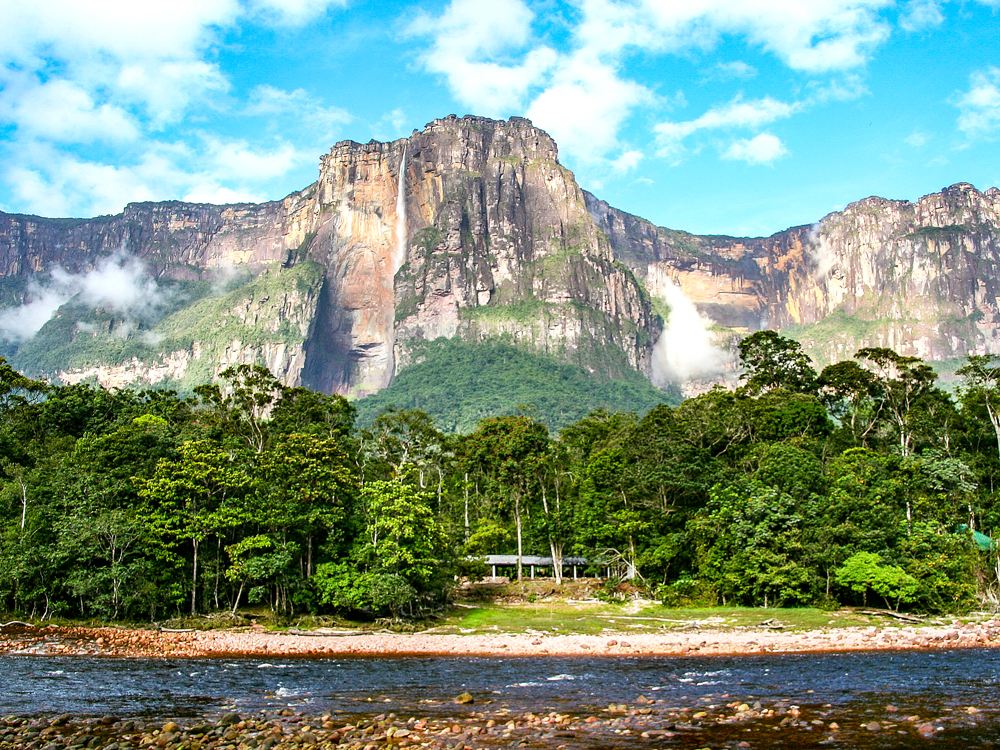
The majestic curtain of white water billowing down Venezuela’s Angel Falls — the world’s tallest uninterrupted waterfall — would certainly be a worthy inspiration for its celestial name. But the waterfall was actually named after an American pilot, Jimmy Angel, who was the first to fly over it and share his discovery with the outside world. In 1935, Angel was scanning the mountains of southern Venezuela for potential sites to mine precious jewels when his plane crashed on a mesa. Fortunately, he survived, only to later spot the falls in the distance. Today, his restored plane resides in Venezuela’s Aeronautics Museum, while a replica overlooks the cascade.
Angel Falls consists of one dramatic single drop from Auyantepui Mountain to the unspoiled wilderness 3,212 feet below. To put that into perspective, that’s nearly 20 times taller than Niagara Falls. The dense jungle region surrounding the falls is nicknamed the “lost world,” otherwise known as Canaima National Park, a UNESCO World Heritage Site. Due to its extreme isolation, visitors must take either an airplane tour or a long river journey to witness the falls in person, but it’s hard to argue the payoff isn’t heavenly.
Skógafoss Falls – Iceland

Skógafoss Falls isn’t just one of Iceland’s biggest (and most impressive) waterfalls — it is said to conceal where a gold-filled treasure chest was left 1,100 years ago. Legend states that Þrasi Þórólfsson, an early Viking who settled on the island’s southern tip, buried his fortune in a cave behind the thunderous, 197-foot-tall, 82-foot-wide cascade. After his death, when fortune seekers tried to recover the chest, one of them reportedly snagged its circular handle before the riches were lost forever. The handle is now on display a mile away at the Skógar Museum.
The land at the base of the falls is flat, so if you don’t mind getting splashed, you can walk right up to the water, as characters did in the films The Secret Life of Walter Mitty and Thor: Ragnarok. For an overhead view of the torrent and the glimmering Atlantic Ocean, visitors with stamina can climb 370 steps to access an observation platform. The colossal spray of Skógafoss Falls means that at least one rainbow is typically visible any time the sun is out — and during summer, Iceland’s famous “midnight sun” offers plenty of daylight to relish them.
Shoshone Falls – Idaho
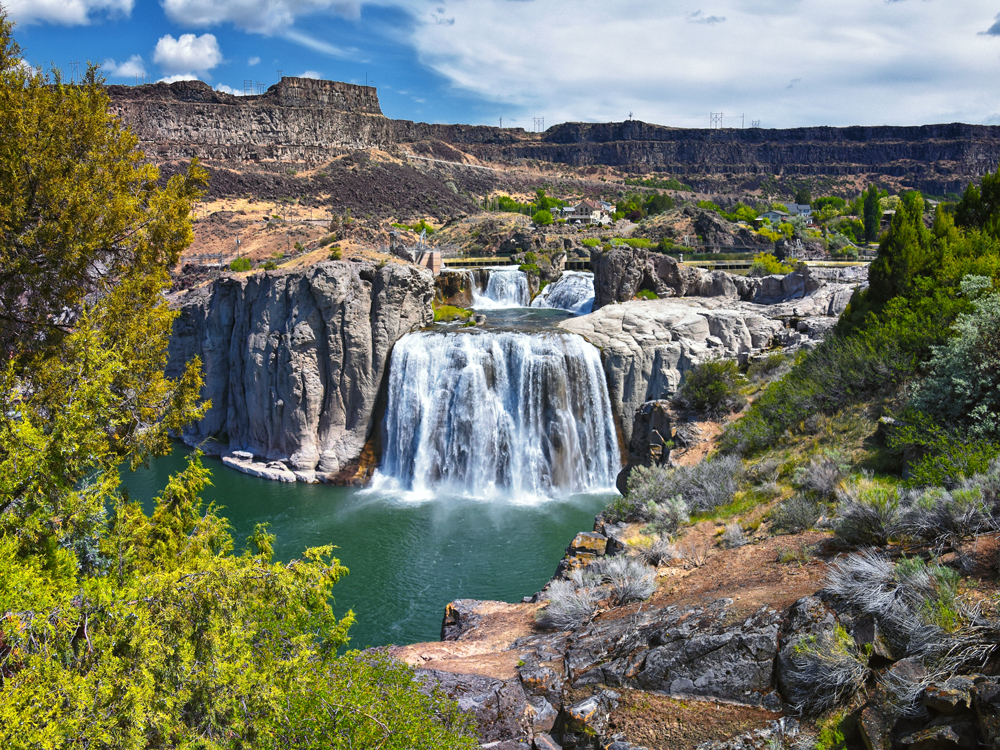
Despite playing second fiddle in its nickname — the “Niagara of the West” — Idaho’s Shoshone Falls actually stands taller than Niagara, reaching a height of 212 feet with a rim spanning 900 feet wide. The falls were an early “roadside” attraction as a popular detour for settlers along the Oregon Trail in the mid-19th century. And long before then, the falls provided sustenance for the Lemhi Shoshone peoples (for which it’s now named), who relied on the Snake River’s salmon population as their primary food source.
Though Shoshone is stunning any time of year, water flow varies depending on the season. The falls experience peak flow in the spring months as temperatures rise, caused by snowmelt in the nearby Rocky Mountains. Throughout the summer, however, water is diverted to irrigate nearby farmland, leaving Shoshone Falls a relatively dry — albeit still impressive — rock formation. Visitors can enjoy hiking trails, observation decks, and stop by a nearby monument commemorating daredevil Evel Knievel’s much publicized (failed) attempt to jump over the Snake River Canyon on a motorbike in 1974.
Multnomah Falls – Oregon
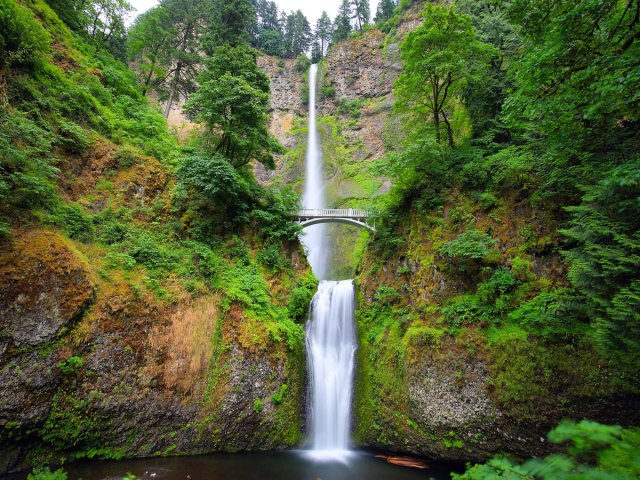
The most-visited natural recreation site in the Pacific Northwest, according to the U.S. Forest Service, this remarkable 611-foot cascade draws around 2 million tourists each year to the Columbia River Gorge National Scenic Area, located about 30 minutes outside Portland. The spring-fed, forest-ensconced, and reliably flowing falls — between the local snowmelt and the aforementioned springs, the source doesn’t run dry — were created for a young princess in search of a secluded bathing spot, according to local Indigenous lore.
To take in the full scale of her truly majestic hideaway, head to the viewing area carved out of the rock face, where both tiers of the falls are on view. For an even better perspective, walk up the trail to Benson Bridge — so named for the businessman who owned the site in the early 20th century — where you’ll get a surreal dual view of the top tier’s 542-foot height in one direction, paired with the bottom tier’s 69-foot drop opposite.
Kaieteur Falls – Guyana
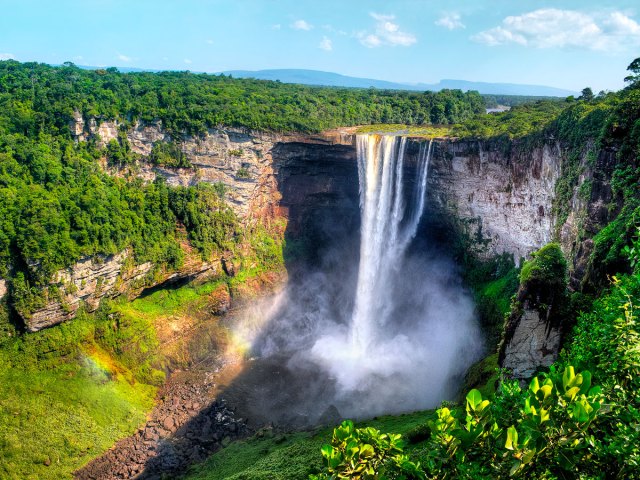
Often considered the largest single-drop waterfall (by volume of flow), Kaieteur Falls is surrounded by dense Amazon rainforest in Guyana on South America’s North Atlantic coast. The Potaro River plunges 741 feet to the base at 23,400 cubic feet per second, making Kaieteur Falls one of the most powerful waterfalls on the planet.
While one legend claims the falls are named for a chief who sacrificed himself to the gods, the favorite story says an unpleasant man was pushed into a boat at the edge by his relatives, giving the plunge the name Kaieteur (literally, “old man fall”). Visiting is relatively easy: Kaieteur International Airport is a 15-minute walk from the top of the falls.
Horsetail Fall – California
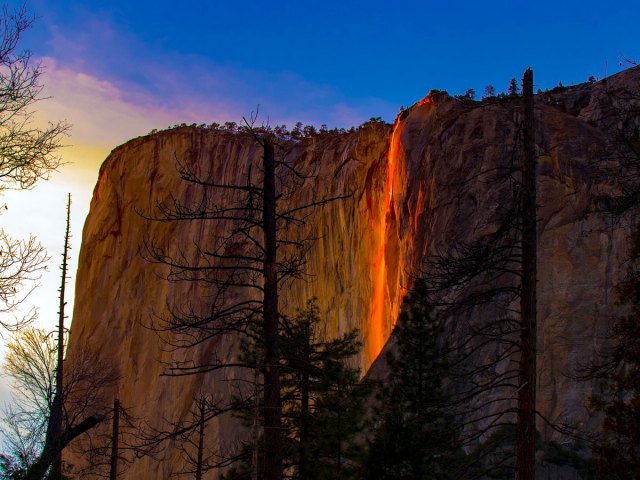
If you happen to visit Yosemite National Park over a two-week period in mid- to late February, you may catch a glimpse of what appears to be a waterfall made of flames. No need to panic, however — the Yosemite Firefall is an optical illusion.
The phenomenon occurs when there is enough snowpack in the surrounding mountains to melt and feed a waterfall called Horsetail Fall, which flows over the edge of Yosemite’s famous granite monolith El Capitan. On clear days when the sun is setting, sunlight shines on the water and its mist, reflecting vibrant orange and red hues so that it looks like fire cascading down the mountain. The display only lasts for about 10 minutes each evening, and only if conditions are exactly right — and it’s possible some years it won’t occur at all.
Khone Phapheng Falls – Laos
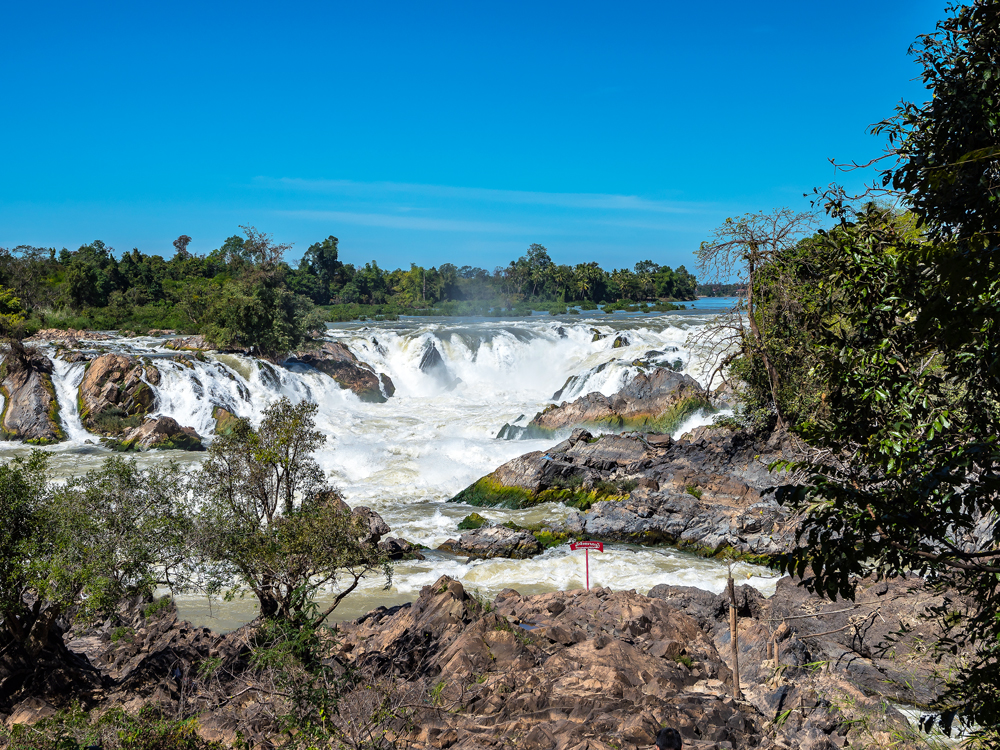
The world’s widest waterfall is found in Southern Laos, near the border of Cambodia in the Champasak Province, but the river that forms it begins high on the Tibetan plateau before tumbling into the South China Sea. The mighty Mekong — which, at 2,703 miles in length, is Southeast Asia’s longest river — winds through Si Phan Don (which translates to “4,000 islands”) to create the Khone Phapheng Falls. These chocolate brown rapids drop 70 feet and stretch over 6.7 miles wide. The series of cataracts prevent the Mekong from being completely navigable into China.
One of the country’s most popular tourist attractions, the falls are home to a visitors center with a temple, museum, and observation deck. The region surrounding the falls is easily explored by bicycle, or opt for a kayak tour on the Mekong and encounter rare Irrawaddy dolphins. Don’t miss the historic (and now defunct) bridge built by the French to connect Don Det and Don Khone islands, and — if you dare — take a thrilling zipline over Li Phi Falls.
Victoria Falls – Zambia/Zimbabwe
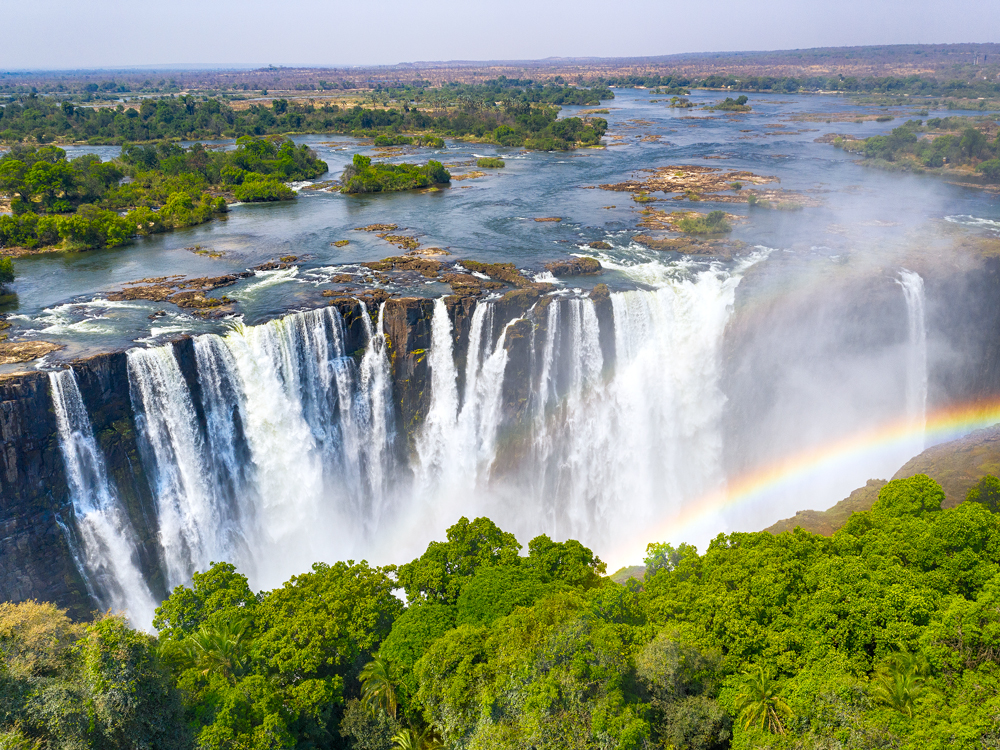
At the border between Zambia and Zimbabwe, about midway through the course of the Zambezi River, one of the world’s most spectacular waterfalls roars. British explorer David Livingstone gave the falls their English name after he became the first European to see them in 1855. But the local Kalolo-Lozi people call the spot Mosi-oa-Tunya, or “The Smoke That Thunders,” because of the loud roar and large veil of iridescent mist the falls create. (The mist can be seen more than a dozen miles away.)
Victoria Falls is not the tallest falls in the world, nor is it the widest. But UNESCO, which designated the falls a World Heritage Site in 1989, calls the site “the largest curtain of falling water in the world,” based on its width and height combined. Composed of five distinct falls, Victoria Falls measures 5,604 feet wide and 354 feet tall (almost double the height of Niagara Falls). The waters here fall at an average of 33,000 cubic feet per minute. Further downstream of Victoria Falls, the Zambezi River empties into the Indian Ocean in Mozambique.
Plitvice Lakes – Croatia
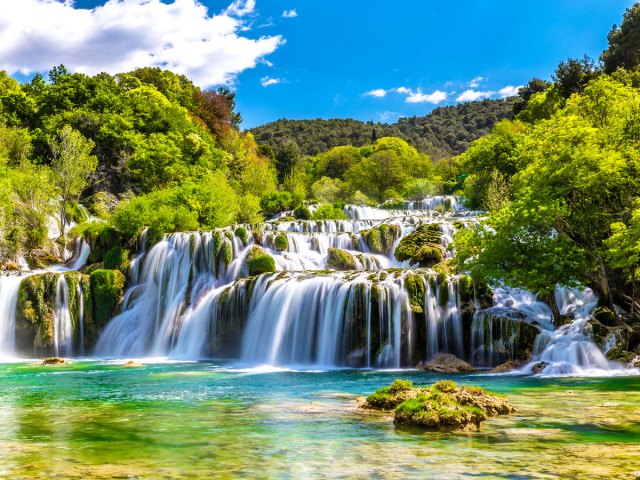
At Croatia’s oldest and largest national park, visitors serpentine across aquamarine lakes on wooden walkways, guided by the sights and sounds of 90 fairytale-worthy waterfalls. Millennia in the making, the Plitvice Lakes arose from water, air, sediments, and organisms coalescing into natural, limestone dams called tufa barriers. The park contains 16 named lakes, plenty of smaller siblings, and waterfalls cascading up to 230 feet. While the lakes make up less than 1% of this 74,000-acre UNESCO World Heritage Site — mostly a collection of forests and meadows in the lower Dinaric Alps — their stunning hues beckon some 14,000 visitors each day.
Situated 80 miles south of Zagreb, near Bosnia, Plitvice Lakes share an ecosystem with over 300 species of butterflies and more than 50 species of orchids, including the world’s densest known population of the endangered lady’s slipper orchid. While fishing and swimming are prohibited, electric-powered boats and trams ferry guests around the park between April and October. In winter months, ski, snowboard, and sled rentals are also available.
Havasu Falls – Arizona
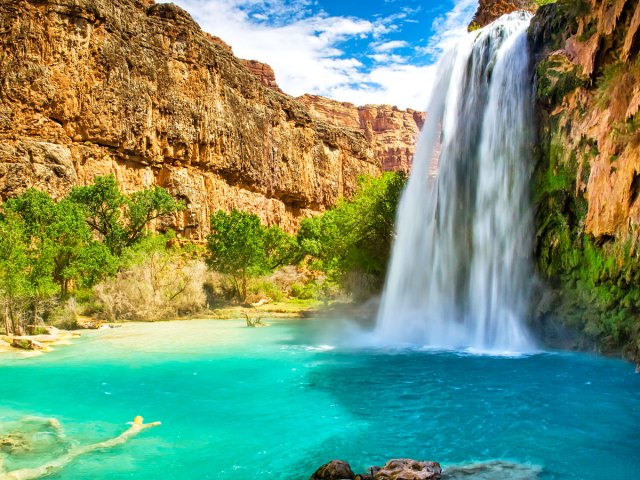
Visiting the dreamy turquoise pools at Havasu Falls requires considerable effort, but their remote and rugged beauty is indisputably worth the trek. Tucked away into the Grand Canyon, this unlikely oasis is located on the Havasupai Indian Reservation (which is separate from Grand Canyon National Park). You’ll need a reservation to enter, a permit from the tribe, and a reservation at the campground or the rustic lodge. And of course, you’ll have to descend into — and climb back out of — the steep canyon.
The reward for all that planning, training, and patience is a once-in-a-lifetime experience of waterfalls, wildlife, soaking in crystalline pools, and appreciating the grandeur of the ancestral lands of the Havasupai, the “People of the Blue Green Water.”
Ruby Falls – Tennessee
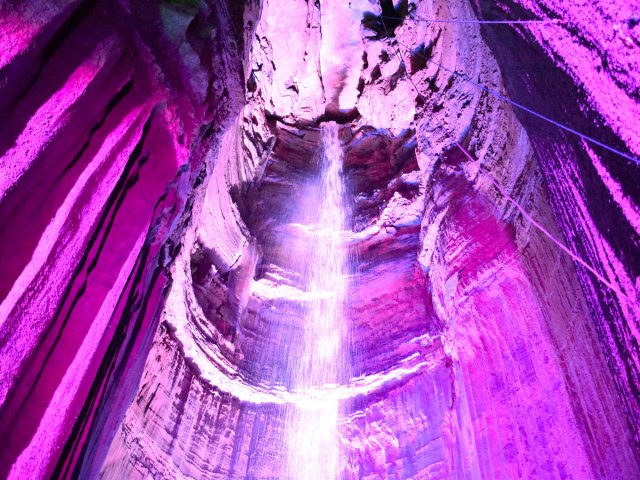
Hidden deep within Lookout Mountain in the spectacular Cumberland Plateau, Ruby Falls is America’s tallest and deepest publicly accessible waterfall. More than 1,100 feet below the mountain’s surface, the 145-foot falls are part of a watershed that includes streams, snowmelt, rainfall, and irrigation runoff, so water flow varies dramatically throughout the year.
Tours operate daily via a glass elevator that descends 260 foot into the cavern, with colored lights illuminating the falls. Make a day of it and combine a visit to Ruby Falls with a ride on Lookout Mountain’s formidable incline railway and a tour of world-famous Rock City Gardens.
James Bruce Falls – Canada
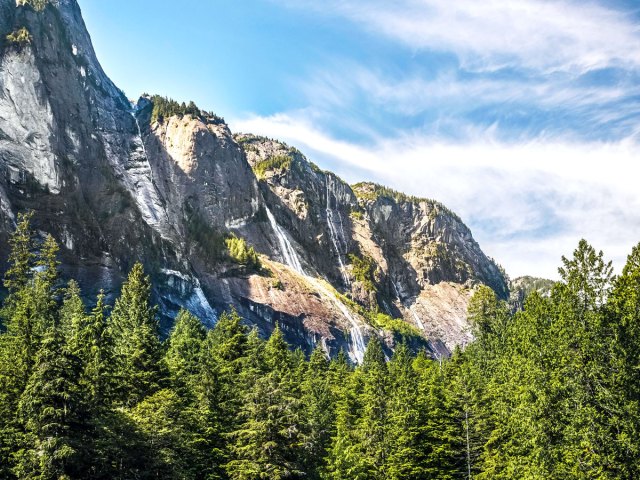
Rivaling the height of Yosemite Falls, James Bruce Falls in the Canadian province of British Columbia is one of the tallest waterfalls in North America. (However, in the heat of summer, the waterfall’s two namesake streams — James and Bruce — often dry up completely.) James Bruce Falls starts from a small snowfield in Princess Louisa Marine Provincial Park and plummets 2,760 feet down in a tiered horsetail — more than 15 times higher than Niagara Falls. The water empties into Loquilts Creek, then Chatterbox Falls and finally into the beautiful Princess Louisa Inlet.
“Underwater Waterfall” – Mauritius
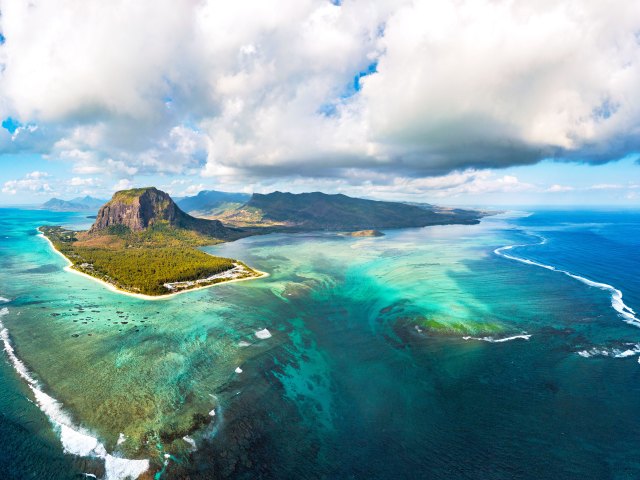
A tropical island nation about 700 miles east of Madagascar, Mauritius sits on an ocean shelf sprawling about 500 feet below sea level — and there’s a steep 2.5-mile drop to the ocean floor from the shelf’s edge. From above, you’ll see what resembles an underwater waterfall off the island’s southwest coast. In reality, currents are forcing sand from the beaches and ocean shelf to greater depths.
Although there’s technically no waterfall, the churning sediment creates a glistening medley of blues, greens, and whites. The best way to experience the phenomenon is on one of the many helicopter tours that fly above the climactic seascape, and also provide a bird’s-eye view of nearby Black River Gorges National Park and Le Morne Brabant Mountain.
More from our network
Daily Passport is part of Inbox Studio, which publishes content that uplifts, informs, and inspires.






